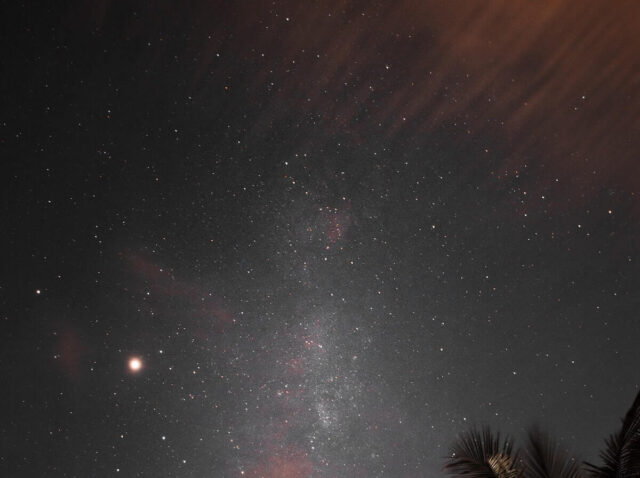Astronomers Discover Massive Galaxy 'Shipyard' in the Distant Universe
Astronomers have discovered a structure thought to be a "protocluster" of galaxies on its way to developing into a galaxy supercluster. Observations show the protocluster, which is located 11...
Astronomers Provide 'Field Guide' to Exoplanets Known as Hot Jupiters
By combining Hubble Space Telescope observations with theoretical models, a team of astronomers has gained insights into the chemical and physical makeup of a variety of exoplanets known...
Most elements lighter than iron are forged in the cores of stars. A star’s white-hot center fuels the fusion of protons, squeezing them together to build progressively heavier elements. But beyond iron, scientists have puzzled over what could give...
Digital media & downloads
UArizona Astronomers to Help NASA's James Webb Space Telescope Peer into Space's Past
Following a brief ocean voyage, NASA's new flagship space observatory has arrived in French Guinea, where it will be readied...
Highly Porous Rocks Responsible for Bennu's Surprisingly Craggy Surface
Using data from NASA OSIRIS-REx mission, a University of Arizona-led team of scientists concluded that asteroids with highly porous rocks, such as Bennu, should lack fine-grained material on their...
'Mini Psyches' Give Insights into Mysterious Metal-Rich Near-Earth Asteroids
New research into metal-rich asteroids reveals information about the origins and compositions of these rare bodies that could one day be mined.
University Communications
Today
An...
'Dead' Galaxies Mysteriously Ran Out of Fuel to Make Stars in Early Universe
Taking advantage of a phenomenon that allows astronomers to use massive galaxy clusters as natural magnifying glasses, researchers have discovered strange galaxies that stopped making...
Earth and Venus Grew up as Rambunctious Planets
What doesn't stick comes around: Using machine learning and simulations of giant impacts, researchers at the Lunar and Planetary Laboratory found that the planets residing in the inner solar systems were likely born...
Today, an international team of scientists, including researchers at MIT, have announced the detection of a new kind of astrophysical system: a collision between a black hole and a neutron star — two of the densest, most exotic objects...
A new class of exoplanet very different to our own, but which could support life, has been identified by astronomers, which could greatly accelerate the search for life outside our Solar System.
In the search for life elsewhere, astronomers have...
Astronomers calculate that the Oort Cloud may be home to more visiting objects than objects that belong to our solar system.
In 2019, astronomers spotted something incredible in our backyard: a rogue comet from another star system. Named Borisov, the...
























